Cash
Through a current account
Electronic card (Visa, Master, Dina, etc.)
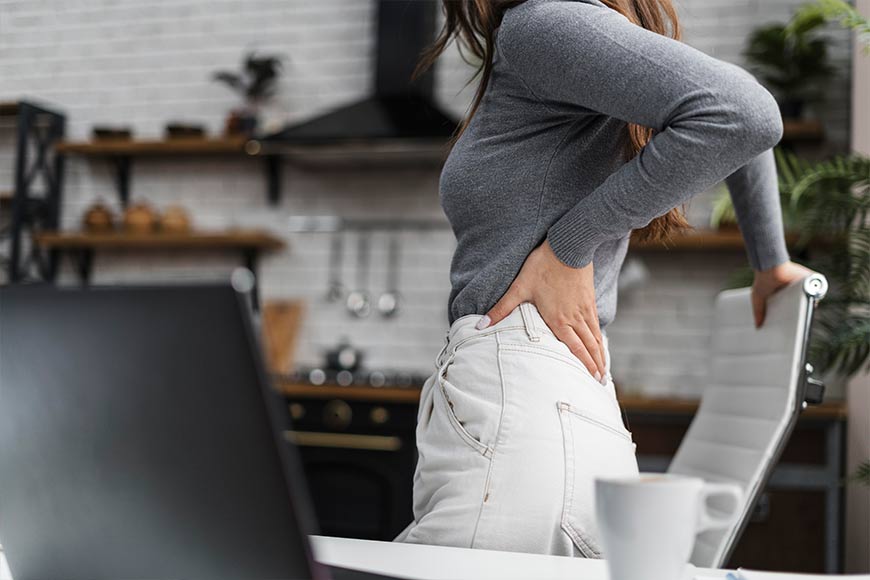
Fokus Fizical 100% guarantees fast and effective healing
Super DISCOUNT! 20% on all therapies in Oktober!
Do not treat yourself over the Internet! Make an appointment via Viber now!
Lower back pain is one of the most common forms of pain that affects people of all ages. This pain, which usually occurs in the lumbar (lower) spine, can come on suddenly and be severe or develop gradually and become chronic. Although back pain can be caused by a variety of factors, the essence of lower back pain is that the spine, muscles, ligaments, and nerves that make up this area can be under a lot of stress.
The lower spine contains discs that serve as "cushions" between the vertebrae, muscles that allow movement, and nerves that allow communication between the spine and the rest of the body. Any change in the structure of this part of the spine can cause pain.
Lower back pain can manifest in various ways, and symptoms depend on the cause of the pain. It can be mild and intermittent or severe and chronic. Recognizing the symptoms is crucial, as they can help with timely diagnosis and treatment.
Here are some of the most common symptoms:
Acute pain is sudden and intense, often after an injury or overuse. It can be sharp and localized, especially when bending, lifting heavy objects, or changing positions.
Stiffness in the back: Stiffness occurs due to muscle tension or disc problems, which makes it difficult to turn or bend. This symptom is especially pronounced in the morning or after sitting for a long time.
Pain that spreads to the legs (sciatica): Pain caused by a herniated disc can spread down the legs, from the back to the hips and feet, and is often accompanied by tingling or an electric sensation in the legs.
Weakness in the legs and arms: Nerve compression can cause weakness in the legs or arms, making it difficult to move or perform daily activities.
Numbness or loss of sensation: Numbness in the legs or feet is often the result of pressure on a nerve, which is typical of spinal stenosis or a herniated disc.
Pain when moving, coughing, or sneezing: Pain may become more intense with movements such as bending, coughing, or sneezing, due to additional pressure on the nerve roots or discs.
Difficulty sitting and standing: People with lower back pain often have difficulty sitting or standing for long periods of time, and the pain may increase if they remain in the same position for a long time.
Increased pain when carrying heavy objects: Lifting heavy objects or performing activities that require bending the spine can increase pain due to pressure on the muscles, ligaments, and discs.
Morning discomfort: Pain is often worse in the morning or at night due to prolonged lying down, which can cause stiffness and discomfort in the muscles.
Understanding these symptoms is key to identifying the cause of your back pain. If symptoms occur or persist, contact a doctor or physical medicine specialist to receive appropriate diagnosis and treatment.
Muscle strains
Lower back pain can be caused by a number of factors, and is often the result of a combination of several causes. While poor posture is one of the most common problems, there are other factors that can contribute to the development of this pain.
Insufficient physical activity
In this day and age, many people spend a large part of their day sitting, especially in offices, which leads to weakening of the back and trunk muscles. Sitting in an incorrect position further exacerbates the problem, because the spine is not properly supported. Exercising several times a week can help strengthen the back muscles and prevent pain.
Increased body weight
Excess weight creates additional strain on the spine, especially in the lower back. The spine has to carry weight that is not ideal for its natural balance, which can cause pain. Excess weight can also cause muscle tension and worsen postural problems.
Stress
Although we usually associate stress with mental health, it can also cause physical symptoms, including back pain. When we are stressed, our muscles tighten, especially in the neck, shoulders, and back. This tension can cause pain that becomes chronic if not recognized and treated.
Ill-fitting footwear
Wearing the wrong footwear, such as high heels, flat shoes, or shoes with poor-quality soles, can change the way we walk, which directly affects our spinal posture. Such problems can cause back pain because the unnatural position of our feet can lead to improper posture, which is transmitted to the spine.
Injuries and improper movements
Lifting heavy objects, sudden movements, or poorly performed physical exertion can cause injuries to the back. This can lead to damage to the discs or ligaments in the spine, which causes pain. For example, improper lifting can cause injury to the intervertebral discs, which can lead to pain that spreads to the legs.
Sciatica and Nerve Problems
Sciatica, which occurs when pressure is placed on the sciatic nerve, can cause pain that radiates down the leg. This problem can be caused by a variety of conditions, such as a herniated disc, a narrowing of the spinal canal (stenosis), or degenerative changes in the discs between the vertebrae. These changes can put pressure on the nerve roots, causing pain in the back and legs.
Spinal stenosis
This condition occurs when the space through which nerves pass in the spine narrows, which can put pressure on the nerves and lead to pain. Spinal stenosis usually occurs with age and can cause lower back pain that can radiate into the legs.
Understanding the cause of your lower back pain is important for proper treatment. If you are experiencing these symptoms, consult a specialist to get an accurate diagnosis and a recommendation for appropriate treatment.
Every patient who visits our office can be sure that a professional examination will determine the exact cause of their lower back pain. Timely medical attention and appropriate therapy are key to effective treatment.
The most effective treatment for back pain includes physical therapy that is tailored to the specifics of each patient. Physical therapy works on the cause of the pain, whether it is muscle tension, spinal degeneration, or disc damage. One of the most modern treatments is DTS spinal decompression, which releases compressed nerves by micronizing the spine, reducing pain and inflammation.
Physical therapy methods include electrotherapy, heat and cold therapy, and spinal mobilization. Once the pain has subsided, kinesitherapy follows, which includes exercises to strengthen the muscles of the back, trunk, and legs.
Therapy is key to preventing re-injury and long-term recovery. For specific problems such as herniated discs or sciatica, treatment is focused on resolving these conditions. Dr. Radoje Čobeljić, a physical medicine specialist with three decades of experience, leads the treatment of patients with spinal problems.
What are the most common causes of lower back pain?
The most common causes of lower back pain include poor posture, physical inactivity, incorrect sitting, injuries, muscle strains, degenerative disc disease, herniated discs, and spinal stenosis. Stress, obesity, and ill-fitting shoes can also contribute to back pain.
When should you seek medical help for lower back pain?
If the pain lasts more than a few days, if the pain worsens, spreads to the legs, causes weakness or numbness, or if you experience problems with urine or stool control, you should see a doctor immediately.
Is exercise beneficial for lower back pain?
Yes, doing exercises correctly can help relieve lower back pain. Exercises that strengthen the muscles in your back, trunk, and legs, as well as stretching your muscles, can improve spinal stability and reduce pain.
How is a herniated disc treated?
Treatment for a herniated disc includes physical therapy, such as DTS spinal decompression, which helps to return the disc to its natural position and reduce pressure on the nerves. After the pain has subsided, therapeutic exercises are used to strengthen the muscles and restore mobility.
Can stress cause lower back pain?
Yes, stress can cause muscle tension and worsen back pain. Psychological factors often influence physical tension, which can contribute to lower back pain.
What are the symptoms that indicate a more serious back problem?
If back pain is accompanied by weakness in the legs, numbness, loss of sensation, or problems with bladder and bowel control, these may be signs of more serious problems, such as nerve compression or spinal cord injury, and you should seek medical attention immediately.
Therapeutic day (2 classic physical therapy procedures, hilt lasers, decompression table)
7.000 din -
5.500 din
7.000 din -
5.500 din
Therapeutic package of 10 treatments and control examination
55.000 din -
45.000 din
55.000 din -
45.000 din
Individual exercises (30 min)
2.500 din -
2.500 din
2.500 din -
2.500 din
Spinal decompression TRITON table
4.000 din
4.000 din
Package - spinal decompression TRITON table
35.000 din
35.000 din
Dry needling
3.000 din -
2.000 din
3.000 din -
2.000 din
Manual massages (30 min)
3.500 din
3.500 din
Osteopathy - Neuromyo fascial pain relief
5.000 din
5.000 din
Cash
Through a current account
Electronic card (Visa, Master, Dina, etc.)
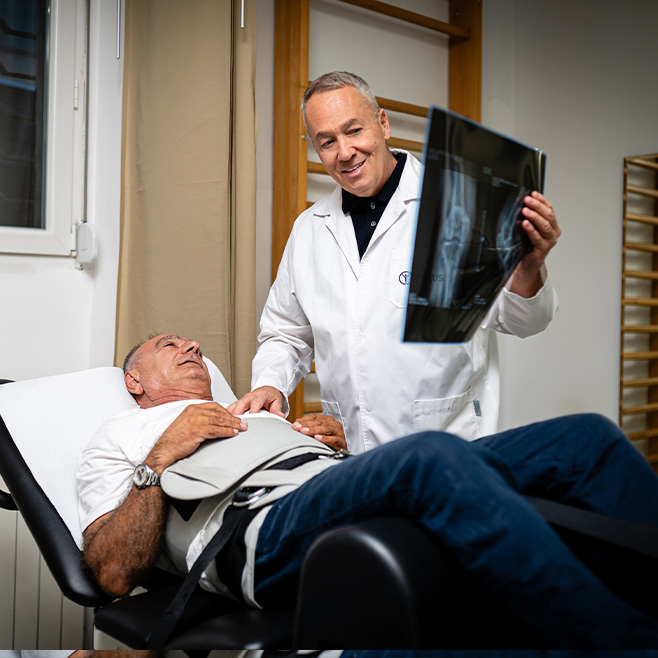
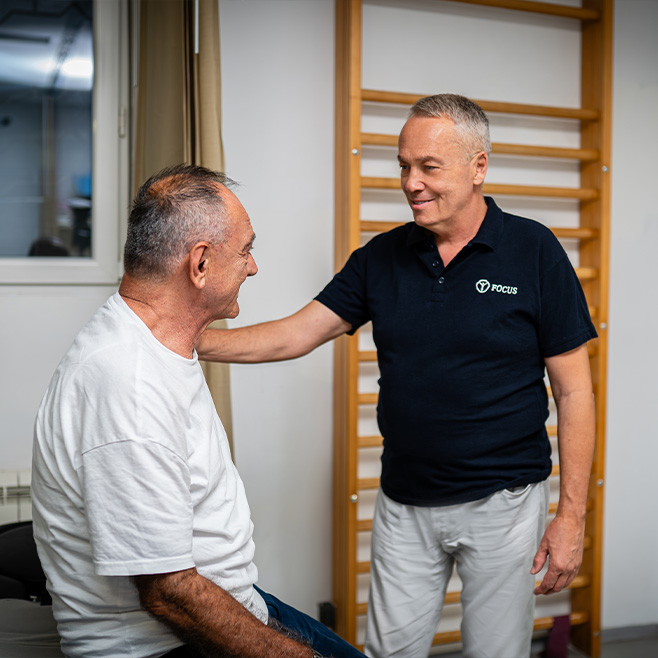
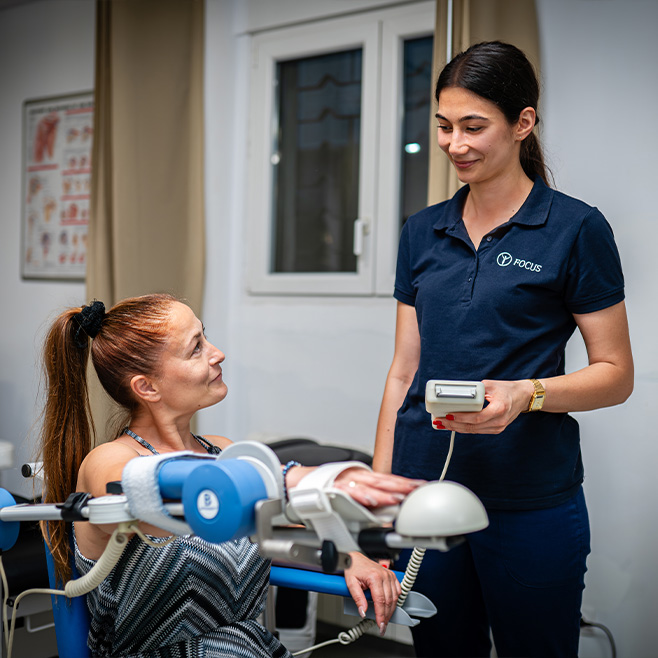
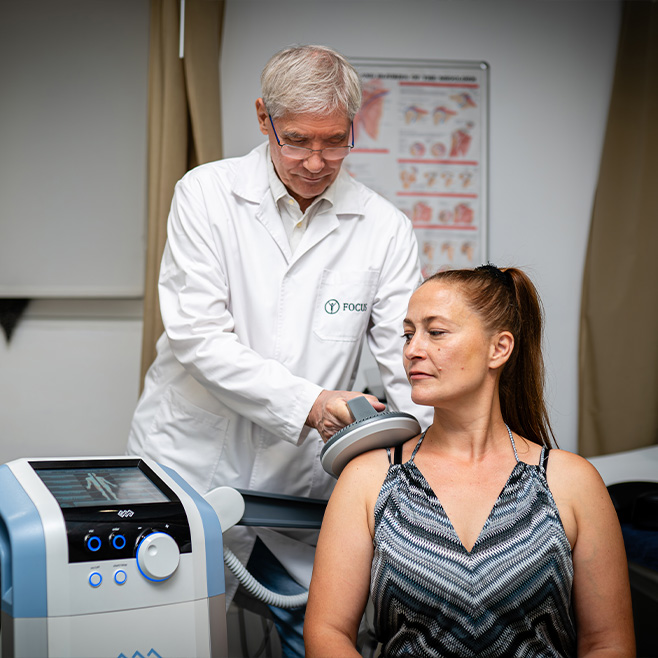
See the experiences of our satisfied patients who successfully recovered with the help of our physical therapy. Get acquainted with the testimonies of patients who faced various joint injuries, sports knee injuries, back injuries and similar problems, which we quickly, efficiently and successfully treated.
Aesthetic surgery
Focus Fizikal is a leading private clinic for physical therapy in Belgrade. For more than 10 years, we have been providing high-quality services that enable quick recovery and healing of our patients.

For all our current and future patients, we have made it possible to schedule an appointment online.